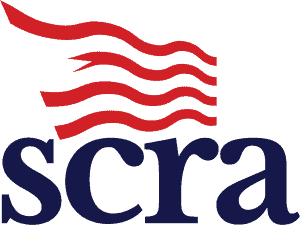Military Age Limit: Everything You Need To Know

Age plays a powerful role in shaping military readiness and career potential. The armed forces expect service members to be physically capable, mentally prepared, and ready to adapt to the demands of military life. For many individuals seeking to join the military, the first step is not learning about basic training or the Armed Services Vocational Aptitude Battery, but asking a much simpler question: Am I still within the age limits?
Each branch of the military sets its own rules, and federal law provides broad guidelines that influence who can serve. What makes the topic even more complex is that exceptions sometimes exist, creating opportunities for those who might assume they are already too old to enlist.
If you have ever wondered whether you fall within the military age requirements or if exceptions might apply in your case, keep reading. The answers may surprise you.
Contents
- 1 U.S. Military Age Requirements by Branch
- 2 Age Requirements for U.S. Service Academies
- 3 Special Circumstances: Waivers and Prior Service Credits
- 4 Summary Table: Age Limits by Branch
- 5 Conclusion
- 6 FAQs
- 6.1 Can I join the military at 45 years old?
- 6.2 What is the oldest you can be to join the military?
- 6.3 How old can a woman be to join the military?
- 6.4 Can I join the military at 40 years old?
- 6.5 Can I join the military at 55 years old?
- 6.6 Is 23 too old to join the military?
- 6.7 What is the cutoff age for military enlistment?
U.S. Military Age Requirements by Branch
Army Age Requirements
The Army offers one of the broadest enlistment ranges compared to other branches. Candidates for active duty, the Army Reserve, or the National Guard can enter within the following limits:
- Minimum age: 17 with parental consent
- Minimum age without consent: 18
- Maximum age: 35 for active duty, reserve, or guard
For officer candidates through the United States Military Academy at West Point, the age criteria are stricter:
- Minimum age: 17
- Maximum age: 23 on the date of admission
In some cases, exceptions apply. Waivers may be granted for prior service members or applicants pursuing critical roles that require additional personnel. Eligibility is still tied to whether a recruit can finish basic training within the established timeframe.
The Army’s higher maximum enlistment age makes it an appealing choice for older applicants who still meet physical requirements and want to begin a career in military service.
Marine Corps Age Requirements
The Marine Corps sets tighter limits on enlistment compared to other branches. For both active duty and reserve service, candidates must be at least 17 with parental consent or 18 without it, and the maximum enlistment age is 28.
- Minimum age: 17 with parental consent
- Minimum age without consent: 18
- Maximum age: 28 for both active duty and reserve service
The U.S. Naval Academy, which commissions Marine officers, follows a narrower range. Candidates must be between 17 and 23 on the date they enter, with no exceptions beyond this window.
Unlike the Army or Navy, the Marine Corps does not have a National Guard component, so opportunities to serve are limited to active duty or reserve paths.
Physical fitness is also a defining factor. Because of the demanding nature of Marine training, very few recruits are accepted once they reach 25 or 26.
Age waivers are rare, and only in exceptional cases will older personnel be considered. This makes the Marine Corps one of the most selective branches when it comes to age and physical standards.
The Navy offers one of the highest maximum enlistment ages across all branches, making it an option for older applicants who still want to serve. For both active duty and the Navy Reserve, enlistment begins at 17 with parental consent or 18 without it, and the maximum age is 41.
- Minimum age: 17 with parental consent
- Minimum age without consent: 18
- Maximum age: 41 for active duty and reserve enlistment
For those aiming to become officers through the U.S. Naval Academy, the age range is much narrower. Candidates must be at least 17 and under 23 on the day they enter the program.
The Navy does not have a National Guard component, so paths are limited to active duty and reserve service. Still, its wide age window stands out.
Waivers may be available in specialized fields where demand is high, such as nuclear operations or medical roles. This flexibility makes the Navy one of the more open branches for individuals seeking to join later in life.
Air Force Age Requirements
The Air Force recently expanded its maximum enlistment age, making it one of the most accommodating branches for new recruits. Active duty, Air Force Reserve, and Air National Guard all accept applicants beginning at 17 with parental consent or 18 without it, up to a maximum age of 42.
- Minimum age: 17 with parental consent
- Minimum age without consent: 18
- Maximum age: 42 for active duty, reserve, and guard enlistment
For future officers entering through the U.S. Air Force Academy, the age requirement is more limited. Candidates must be between 17 and 23 on the day they are admitted.
Certain specialized positions allow even greater flexibility. Healthcare professionals and chaplains, for example, may qualify for extensions up to age 48 because of the unique expertise required in those fields.
The increase from the previous cap of 39 to 42 reflects the Air Force’s effort to widen opportunities for qualified recruits, particularly those who bring education or career experience that can support its evolving needs.
Space Force Age Requirements
As the newest branch of the armed forces, the Space Force follows eligibility standards that closely mirror those of the Air Force. For active duty or reserve enlistment, applicants can join beginning at 17 with parental consent or at 18 on their own, with the maximum age set at 42.
- Minimum age: 17 with parental consent
- Minimum age without consent: 18
- Maximum age: 42 for active duty or reserve service
There is currently no official National Guard component for the Space Force, although discussions about future integration continue. For officer candidates entering through the U.S. Air Force Academy, the age window is 17 to 23.
What sets the Space Force apart is the technical nature of its roles. Many positions focus on cyber operations, space systems, and advanced communications. Because of this, education requirements and aptitude scores may weigh more heavily than in other branches.
The age criteria remain broad, but potential recruits should expect higher standards in specialized skills.
Coast Guard Age Requirements
The Coast Guard maintains slightly different enlistment rules depending on whether you join active duty or the reserves.
For active duty, applicants can begin at 17 with parental consent or 18 on their own, with the maximum age set at 41. The Coast Guard Reserve follows the same minimum standards, but the maximum age is capped at 40.
- Minimum age: 17 with parental consent
- Minimum age without consent: 18
- Maximum age: 41 for active duty
- Maximum age: 40 for reserve enlistment
The Coast Guard Academy accepts officer candidates between the ages of 17 and 22, creating a tighter window than most other service academies.
While waivers are limited, prior service members may be considered on a case-by-case basis. This flexibility helps experienced individuals extend eligibility, provided they meet physical and educational requirements.
Because the Coast Guard focuses heavily on homeland missions like search and rescue, port security, and disaster response, it can be an appealing choice for older applicants who want to serve closer to home while still contributing to national defense.
Age Requirements for U.S. Service Academies
Joining a service academy is one of the most selective routes into the armed forces, and the age rules reflect that. Applicants must be at least 17 when they enter, with the upper limit varying by branch.
- Army, Navy, Air Force, and Marine Corps academies: up to age 23
- Coast Guard Academy: up to age 22
The reason for these tighter limits is simple. Academy students need four years to complete demanding academic programs while also preparing for the responsibilities of military leadership. To allow enough time for a full career after graduation, the cutoff is kept lower than most enlisted paths.
Unlike enlistment, where waivers may be possible, the academies rarely bend these standards.
Candidates must not only fall within the age window but also meet high academic expectations, pass physical fitness tests, and secure nominations. These requirements make the academies among the most competitive entry points into military service.
Special Circumstances: Waivers and Prior Service Credits
Although age requirements are firm across the military, some situations allow for limited flexibility.
Waivers may be granted for highly specialized fields such as medical, intelligence, or engineering, where the armed forces have a critical need for skilled personnel. These cases are uncommon and are reviewed individually to ensure that applicants can still handle the physical and mental demands of military life.
Prior service members may also benefit from credits that subtract their previous years of service from their current age. This adjustment can make it possible for experienced individuals to rejoin, provided they remain physically fit and meet other eligibility criteria.
Federal law sets a hard ceiling, with no new enlistments permitted beyond age 42. In practice, very few waivers are granted for applicants over 40. It is important to view waivers as exceptions, not guarantees, and to recognize that age flexibility in the military is highly selective.
Summary Table: Age Limits by Branch
Each military branch sets its own enlistment rules, which means the cutoff point for new recruits is not the same across the board. While some services keep the window narrow, others extend eligibility into the forties.
| Branch | Active Duty | Reserve | Guard | Service Academy |
|---|---|---|---|---|
| Army | 17–35 | 17–35 | 17–35 | 17–23 |
| Marine Corps | 17–28 | 17–28 | N/A | 17–23 |
| Navy | 17–41 | 17–41 | N/A | 17–23 |
| Air Force | 17–42 | 17–42 | 17–42 | 17–23 |
| Space Force | 17–42 | 17–42 | N/A | 17–23 |
| Coast Guard | 17–41 | 17–40 | N/A | 17–22 |
Conclusion
Military age limit set boundaries, but they do not erase the possibility of service for those who meet the right conditions. Whether you are a high school diploma holder exploring your first opportunity or an older applicant with prior service, the armed forces look at more than just your date of birth.
Each branch of the military has its own age restrictions, with the Army age limit extending further than the Marine Corps, and the Air Force and Navy offering some of the most lenient branch policies.
For individuals seeking clarity, the key is to weigh age alongside physical requirements, education requirements, and service branch needs. Knowing where you stand in relation to the maximum enlistment age helps you decide if military life is still a path worth pursuing.
FAQs
Can I join the military at 45 years old?
Joining the military at 45 is not possible under current federal law. The maximum enlistment age across all branches of the military is capped at 42, and even that age is only allowed in certain service branches like the Air Force or Space Force. While waivers exist for exceptional cases, they are extremely rare for individuals seeking enlistment past 40. Education requirements, physical requirements, and ASVAB scores also play a role, but the age limit itself makes joining at 45 highly unlikely.
What is the oldest you can be to join the military?
The maximum enlistment age varies by branch of the military, but federal law sets the cutoff at 42. The Army age limit is 35, the Marine Corps age limit is 28, the Navy allows up to 41, and the Air Force and Space Force both extend eligibility to 42. The Coast Guard sets its cap at 41 for active duty. These age restrictions ensure service members are still physically capable of completing basic training and sustaining military life.
How old can a woman be to join the military?
Military age requirements are the same for men and women. A woman seeking to join the military must meet the same minimum age of 17 with parental consent or 18 without it, along with the same maximum age limits set by each branch of service. The Navy and Air Force recruiter may accept women up to 41 or 42, while the Marine Corps restricts enlistment to 28. Age waivers are handled on a case by case basis, but education requirements and physical requirements apply equally to both men and women.
Can I join the military at 40 years old?
Yes, but only in certain branches of the armed forces. At age 40, an applicant may still qualify for the Navy, Coast Guard, Air Force, or Space Force, provided they meet physical requirements and pass the Armed Services Vocational Aptitude Battery. The Army and Marine Corps have stricter limits, with cutoff ages of 35 and 28, respectively. Potential recruits at 40 should be prepared for more selective screening, since service branches consider both age restrictions and other criteria before approval.
Can I join the military at 55 years old?
At 55, it is not possible to join the military. Federal law sets the maximum enlistment age at 42, and no branch of the military accepts new recruits beyond that point. Even with a high school diploma, college credits, or prior service, individuals seeking to enlist at 55 are beyond the eligibility requirements. Reserve members and service academies also require candidates to be much younger. For those interested in serving the community at that age, alternative civilian or government service opportunities may be more realistic.
Is 23 too old to join the military?
No, 23 is not too old to join the military. In fact, many service members begin their military service in their early twenties. The minimum age starts at 17 with parental consent, and most branches allow enlistment well into the thirties or even early forties. At 23, an individual with a high school diploma or general equivalency diploma still has plenty of time to meet education requirements, pass physical requirements, and complete basic training. For officer paths through service academies, though, the cutoff is 22 or 23, depending on the branch.
What is the cutoff age for military enlistment?
The cutoff age for military enlistment depends on the branch of service. The Army age limit is 35, the Marine Corps sets the maximum age at 28, the Navy allows up to 41, and both the Air Force and Space Force extend eligibility to 42. The Coast Guard requires active duty recruits to be 41 or younger, and reserve service applicants must be 40 or younger. Although age waivers exist, they are rare and selective. Federal law prevents new recruits from enlisting past 42 under any circumstances.








